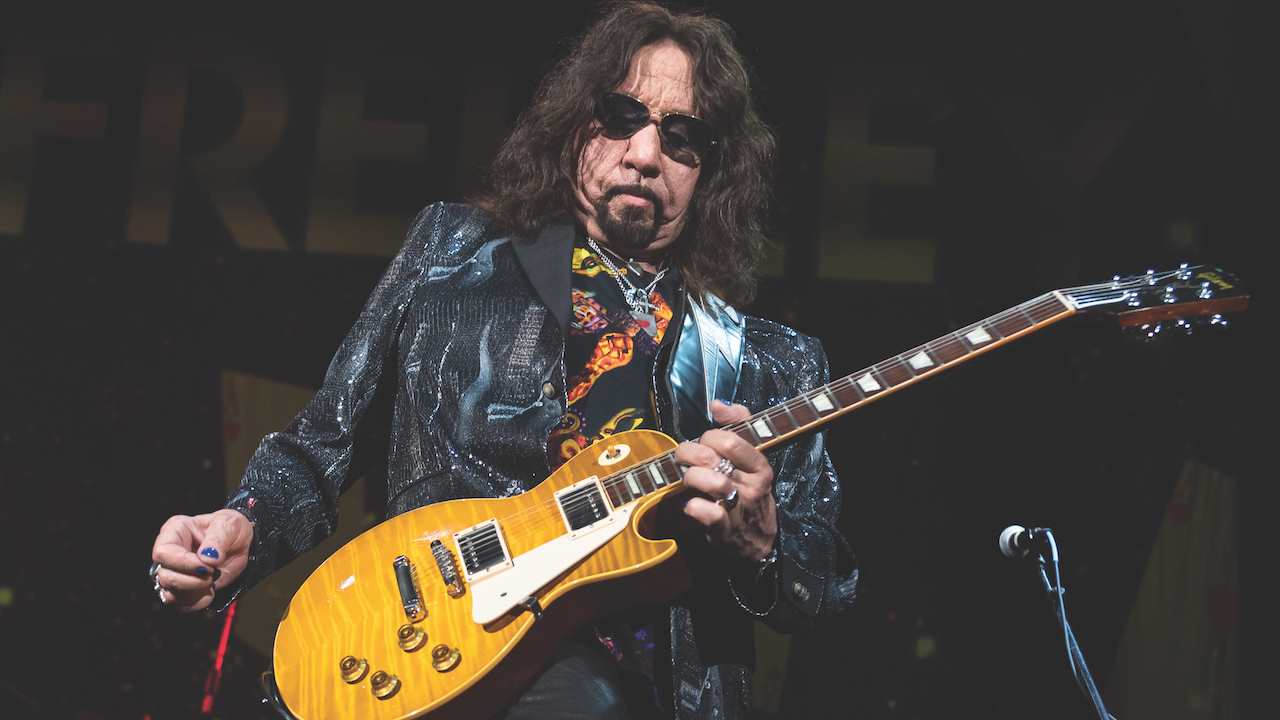Best Fender amps 2025: The finest Fender amplifiers you can get your hands on
Tube warmth or modern modeling? I've taken a look at the best Fender amps for all players and budgets
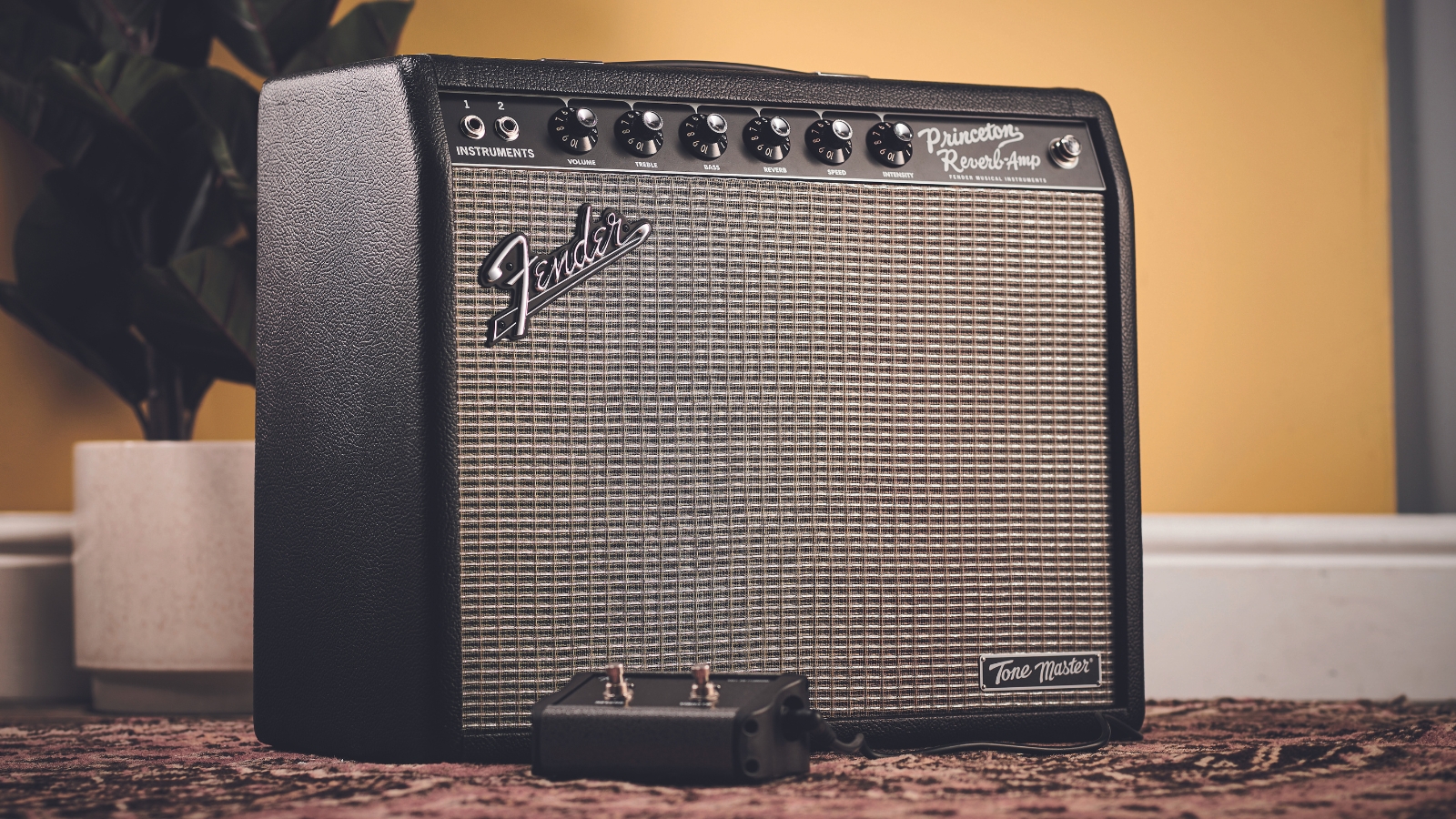
Fewer brands have made as big an impact on the sound of popular music as Fender. The likes of the Strat, Tele, Precision, Jazz, Jazzmaster and more have shaped music how we know it today. However, the best Fender amps have had just as much of an effect as their instruments.
From the 1940s right up until the current day, Fender amps have been seen on stages, in studios and bedrooms around the globe. They cater for everyone too: from complete beginners to some of the biggest names in music, and everyone in between. A commitment to innovation as well as pride in their previous accomplishments has aided their ubiquity in every style of music.
Fender utilize a range of different technologies to produce their amps; some decades old, and others more contemporary.
Whether you’re searching for a big, loud tube amp or a bedroom modeling amp that will give you a load of different sounds, you’re sure to find something that’s going to work for you and I've picked out a selection which I think are well worth considering, including my top pick, the Fender ’65 Deluxe Reverb: a versatile, workhorse amp that sounds terrific.
The quick list
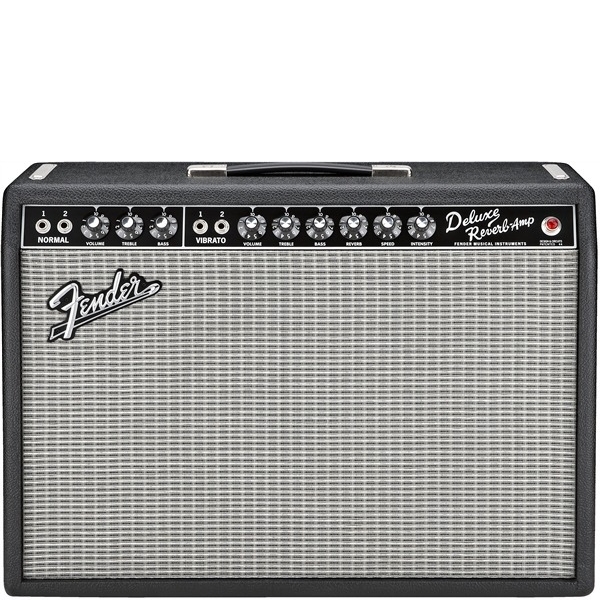
Possibly one of the most influential amplifiers of all time, the Fender '65 Deluxe Reverb is a timeless classic, used on countless hit albums and by many pro guitar players.
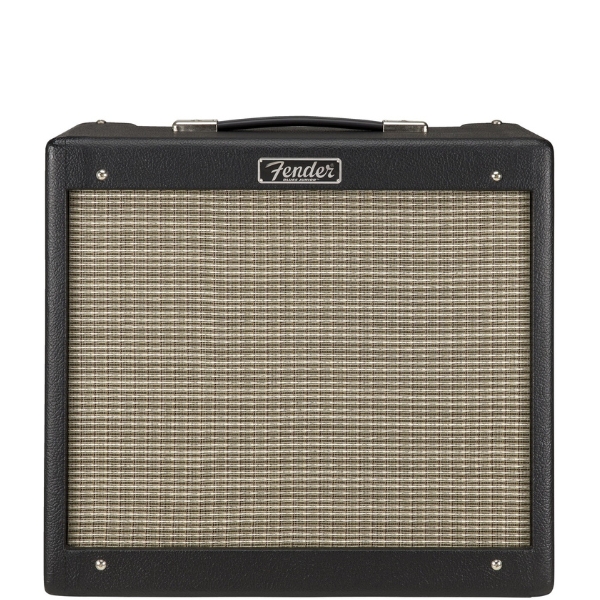
The Fender Blues Junior is one of the most popular gigging amps in the world thanks to its balance of affordability, excellent tone, and fantastic feature set.
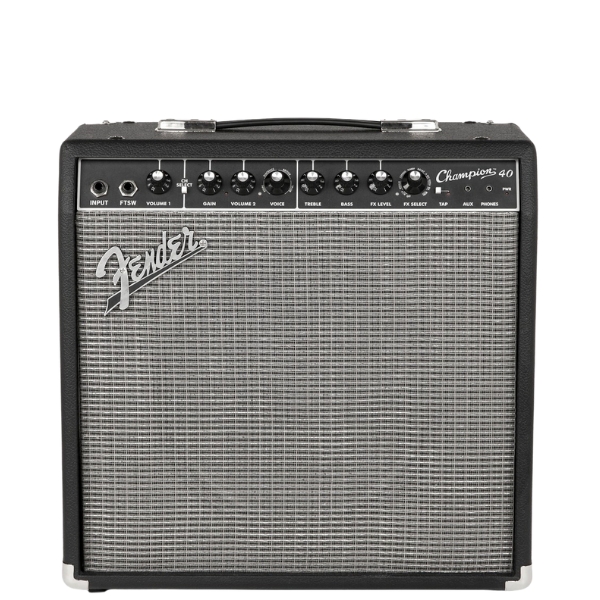
If you're looking for a Fender-branded practice amp, the Champion 40 has multiple voices and effects built in, allowing you to cover loads of sonic ground with it.
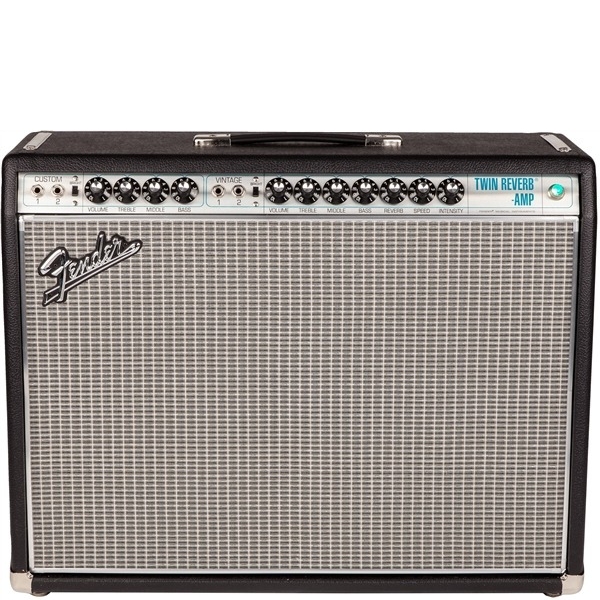
If you like pristine clean tones at loud volumes, the Fender '68 Custom Twin Reverb is the one for you. A superb pedal amp, it pairs wonderfully with overdrives, fuzz, and any other effect.
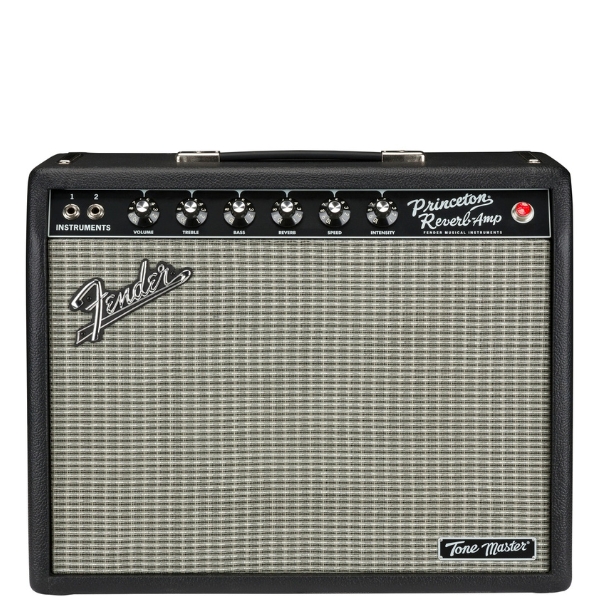
If you're a sucker for tube tone but you don't like the weight of the real deal, Fender's Tone Master Princeton Reverb does an incredible job modeling realistic tube tone.
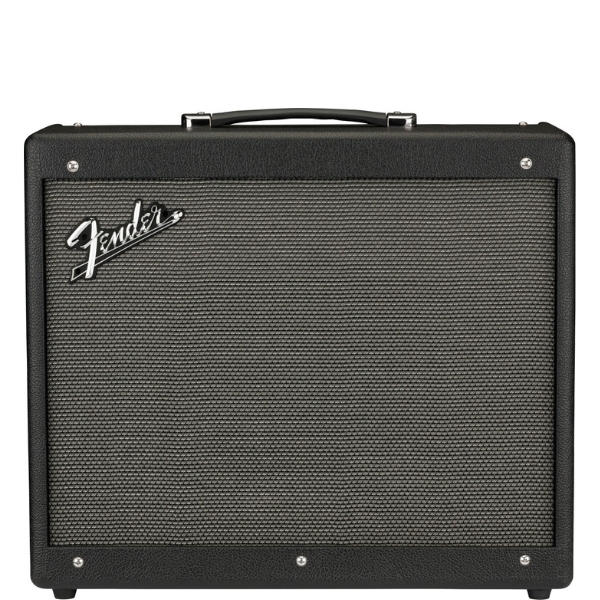
For those who want a lot of different sounds in one amp, Fender's Mustang GTX 100 combines a myriad of voices and effects, with plenty of power for gigging.
Best Overall
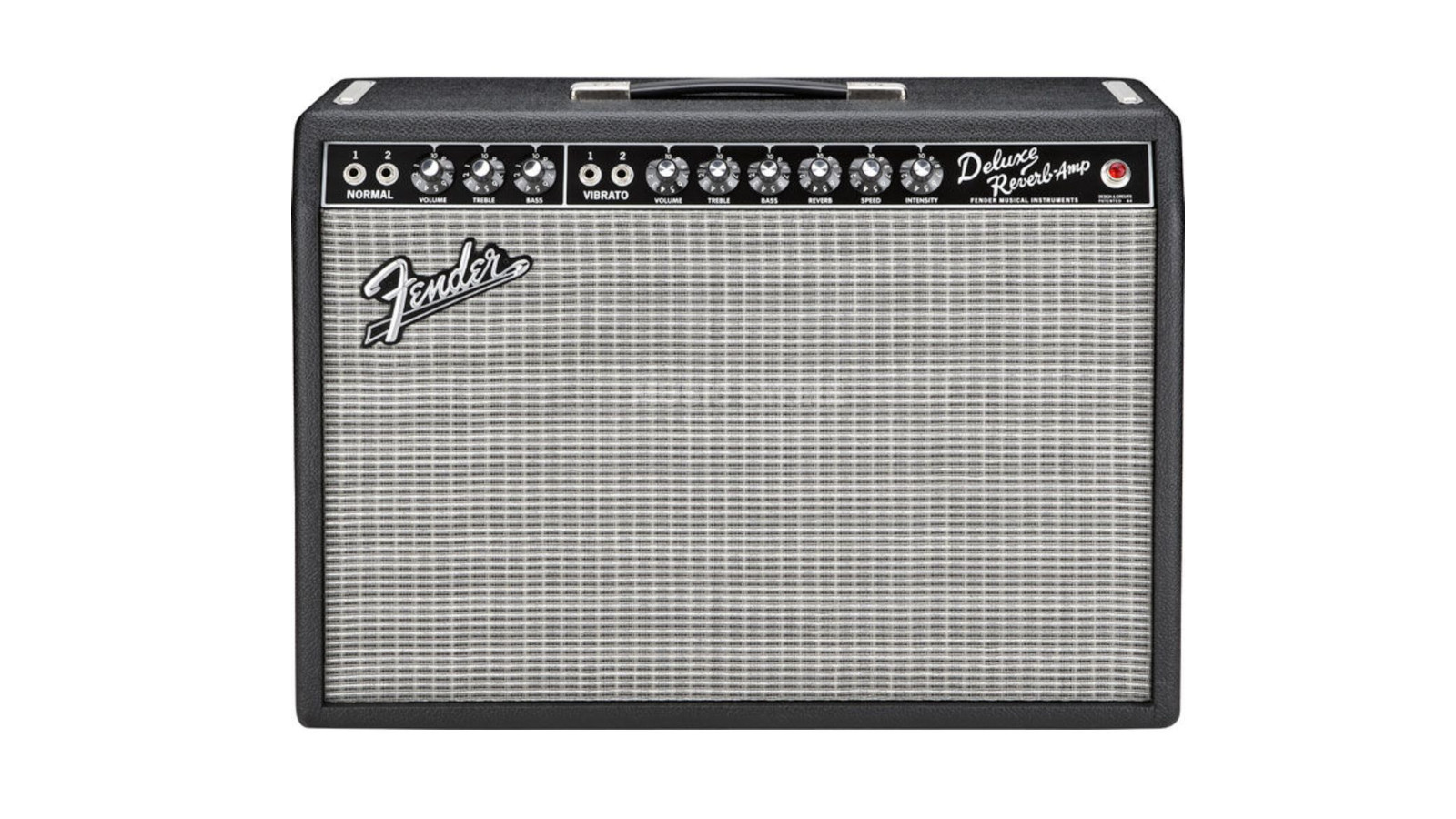
1. Fender '65 Deluxe Reverb
Our expert review:
Specifications
Reasons to buy
Reasons to avoid
✅ Buy if you want a workhorse amp that'll give you years of performance: Beautiful clean tones are a staple of this versatile and classic amp.
❌ Avoid if you're just learning how to play: The '65 Deluxe Reverb has a lot going on and that might just overwhelm new players.
Build quality rating: ★★★★★
Usability rating: ★★★★½
Sounds rating: ★★★★★
Overall: ★★★★★
The Deluxe Reverb deserves the top spot on my list out of sheer influence. Perhaps the most recorded amplifier in history, the Deluxe Reverb was used by studios across the world from Nashville to Abbey Road during the most famous decades in musical history.
The ‘65 reverb is an all-tube-powered 22-watt combo amp capable of spanky clean tones and delicious tube overdrive that not many others can equal.
The Deluxe Reverb’s versatility makes it an ideal weapon in a guitarist's arsenal; it’s loud enough to sit next to a drum kit, there is inbuilt spring reverb and vibrato and the headroom isn’t too excessive that it will stifle natural tube overdrive.
There are two channels; normal and vibrato. The normal channel is a lot more stripped back with three controls; volume, treble, and bass. On the other hand, the vibrato channel is where the amp comes alive. As well as vibrato, the spring reverb is active, and when paired together it’ll lull you into a trance-like musical state. There are two inputs on both channels where input 1 provides 6dB more gain than input 2, so plug into channel 1 if you’re needing more juice.
A perennial classic, the ‘65 Deluxe Reverb is a legendary workhorse that will be your amplifier for life. There aren’t many amps that deserve a place on this list as much as this.
Best for gigging

2. Fender Blues Junior IV
Our expert review:
Specifications
Reasons to buy
Reasons to avoid
✅ Buy if you want a dependable tube-driven Fender amp: A go-to amp for many, the Blues Junior has many features that impress, including excellent reverb.
❌ Avoid if you want lots of volume: The Blues Junior is a neat bedroom amp, but it might not provide the volume levels you're after.
Build quality rating: ★★★★½
Usability rating: ★★★★½
Sounds rating: ★★★★½
Overall: ★★★★½
We are now on the 4th iteration of the Fender Blues Junior and with every release, this plucky little amplifier has topped the best seller charts. For good reason: there is an array of features that make the Blues Junior a compelling option. It strikes a great balance between affordability and reasonable power output, meaning you don’t have to crank it too loud for a natural overdriven tube amp tone.
Powered by three 12AX7 preamp tubes and two EL84 power amp tubes, the Blues Junior will offer plenty of glassy Fender spank when the gain is eased off. Activating the “Fat” button will add a little extra oomph and take the amplifier into overdriven territories. The “Fat” button is also useful at lower volumes to help put a little meat on your tone.
You’ll hear these pretty tones through a 12” Celestion A-Type speaker which has a relaxed American-inspired midrange. The speaker is housed in a 0.75” particle board weighing in at a very portable 31.5lbs. Lastly, a word for the reverb.
There is an authentic spring reverb tank in this Blues Junior which adds a lovely depth to the low end and can get you into surf territory if you so desire.
The Blues Junior is my go-to option if you are after a tube-driven Fender amplifier – give one a try if you haven’t already, you won’t regret it.
Best for practice
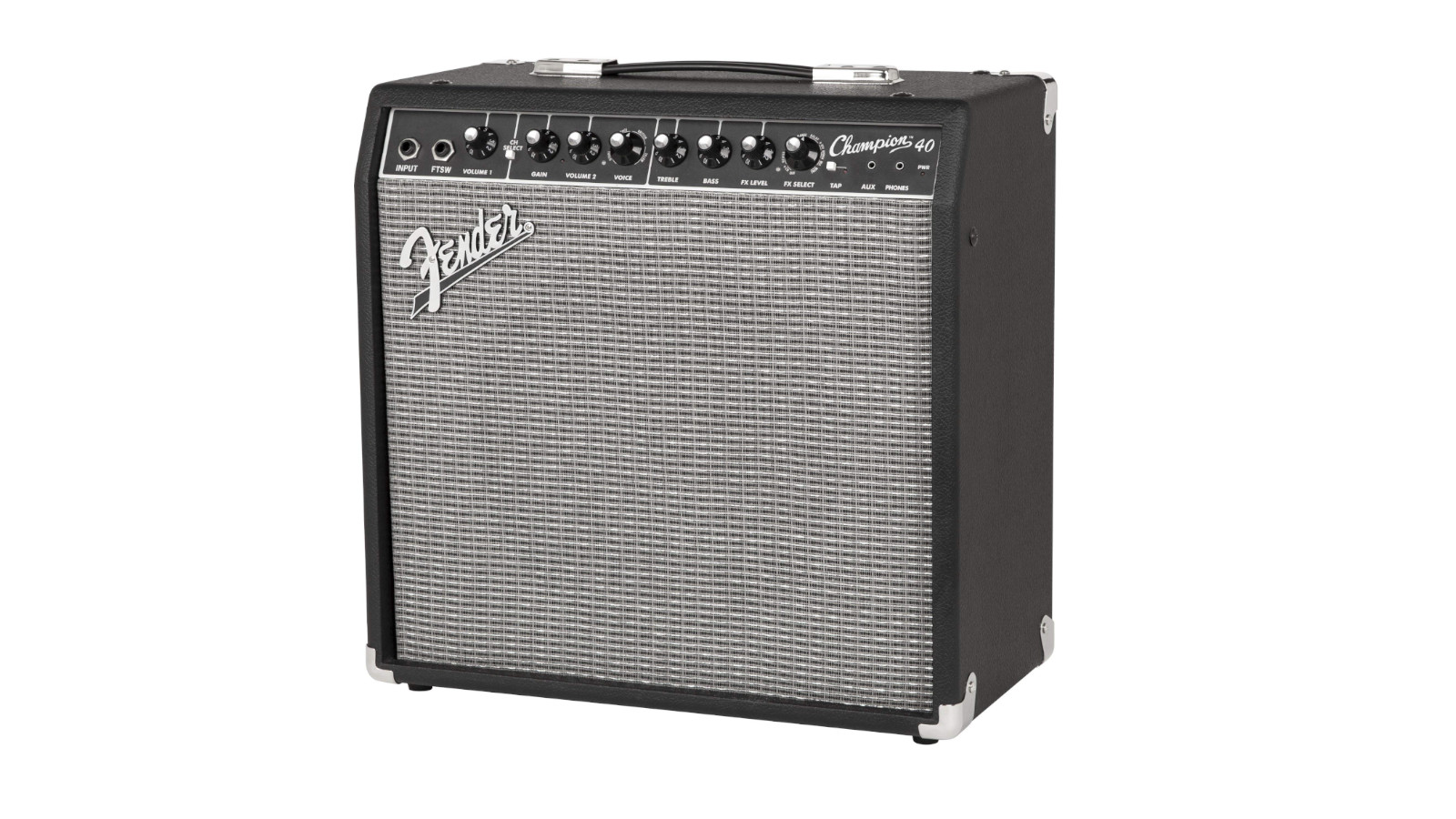
3. Fender Champion 40
Our expert review:
Specifications
Reasons to buy
Reasons to avoid
✅ Buy if you're starting out on your guitar journey: This is a great practice amp that's choc-full of voicings and effects.
❌ Avoid if you're looking for some nice distortion: I found the Champion 40 delivered harsh distortion, so another option could be better for you
Build quality rating: ★★★★½
Usability rating: ★★★★½
Sounds rating: ★★★★
Overall: ★★★★½
If you haven't been playing guitar for long, then you’ll want to go with a practice amp that can be effective at low volumes, have multiple inbuilt effects and voices, and will cover as many bases as possible; ergo, you want a Fender Champion 40.
This 40-watt solid state practice amplifier is loaded with multiple different amp types, from clean to metal, and has plenty of onboard effects to boot. From reverb and delay to chorus and tremolo, you can shape your sound and get a hands-on experience dialing in a tone. Being able to play along to your favorite songs is key to learning effectively and the wealth of amp voicings and effects will allow you to best recreate your heroes’ tones in an affordable package.
Other handy features on the Champion 40 include a headphone output, ideal if you’re practicing into the wee hours, and an aux in, meaning you can play along to backing tracks via your smartphone. The Champ’s user interface is a breeze to work and you won’t get lost in any digital screen settings, just dial the knobs as and how you like for some killer tones.
There are multiple different sizes available in the Champion range. Although the 40-watt model is great at low volumes, you can always go for the Fender Champion 20 if you’re concerned about annoying the neighbors.
Best For Pedals
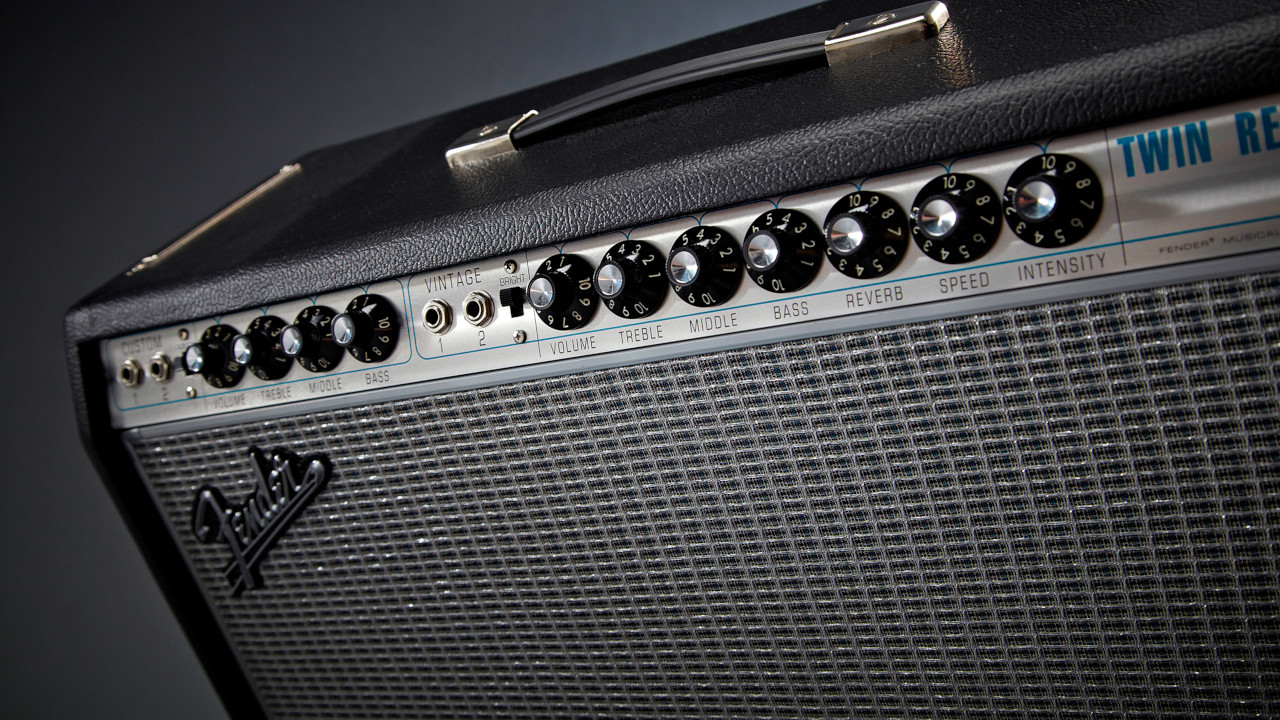
4. Fender '68 Custom Twin Reverb
Our expert review:
Specifications
Reasons to buy
Reasons to avoid
✅ Buy if you want volume and lots of it: The Fender '68 Custom Twin Reverb has 85 watts of all-tube power for big sounds.
❌ Avoid if you want a smaller amp for home use: There's a huge amount of volume available here, so not ideal for using a home.
Build quality rating: ★★★★½
Usability rating: ★★★★½
Sounds rating: ★★★★★
Overall: ★★★★½
For the live player who wants clean tones at loud volumes, look no further than the Fender ‘68 Custom Twin Reverb. This tube-powered giant has 85 watts of all-tube power and headroom for days, meaning if you want to play loud and clean, the Twin will get you there.
This Silverface ‘68 Custom is a little different from a standard Twin, its two channels have very distinct voices. The vintage channel is straight-up Twin Reverb – however, the custom channel has taken inspiration from a modified Bassman tone stack for big, stadium-rocking tones. Also, both channels have access to the in-built spring reverb and tremolo, a feature usually found on channel 2.
With all of the Twin Reverb’s headroom, achieving natural tube distortion does mean you’ll have to crank this thing super loud. If you’re playing in smaller venues and rely on tube distortion for your tone, the Twin may not be the best choice.
However, it is a fantastic pedal platform and you can get there a lot easier using overdrive pedals. The Twin’s natural character works great with pedals and, although the weight and volume will be impractical for some, there’s nothing quite like the sound and character of a Twin.
Best Modeling Amp

5. Fender Tone Master Princeton Reverb
Our expert review:
Specifications
Reasons to buy
Reasons to avoid
✅ Buy if you want a lightweight Fender amp: Coming in at 19.9lbs/9.03kg makes this one of the lighter amps in this list.
❌ Avoid if tremolo is important: The Tone Master Princeton Reverb is a great amp, but the tremolo was a bit too subtle for my tastes.
Build quality rating: ★★★★½
Usability rating: ★★★★½
Sounds rating: ★★★★½
Overall: ★★★★½
The Princeton Reverb stands as the most compact amplifier within Fender's Tone Master series. While the allure of significantly reducing weight, as achieved with the Tone Master Twin Reverb, might hold less sway due to its smaller size, the focus shifts more prominently to nailing the sound of the tube power Princeton accurately. We’re happy to say, Fender has done a fantastic job of doing just that – this thing sounds amazing.
Fender has achieved this by a few different methods. Firstly, the amp is equipped with a 10” Jensen C10R speaker, which is an often-used option for the original Princeton. A Princeton’s soul lies within its reverb and tremolo and Fender didn’t scrimp on the technology to achieve an organic reproduction. By using half of a quad-core DSP for just the reverb and a whole core for the amp’s sound, this is a high-tech bit of kit.
The responsiveness is suitably accurate and the amp will respond differently between a set of single coils and humbuckers, with the latter pushing the front of the amp into a rich overdrive. Although 12 watts doesn’t sound like a lot, it is loud enough to pester those around you and the power toggle on the back can reduce the output all the way down to a sociable 0.3 watts. Finally, there’s also a balanced line out and two cab simulators for plugging straight into a PA or recording any new ideas. The Princeton Reverb Tone Master is digital excellence and, in our opinion, is the best Tone Master yet.

"The Tone Master’s EQ is easy to dial in for different guitars, it breaks up in a non-harsh way when turned up to six and higher, and there’s enough true-to-form realism here to make the Tone Master Princeton a sweet deal, considering it costs $500 less than a standard Princeton Reverb."
Read more: Fender Tone Master Princeton Reverb review
Best For Versatility
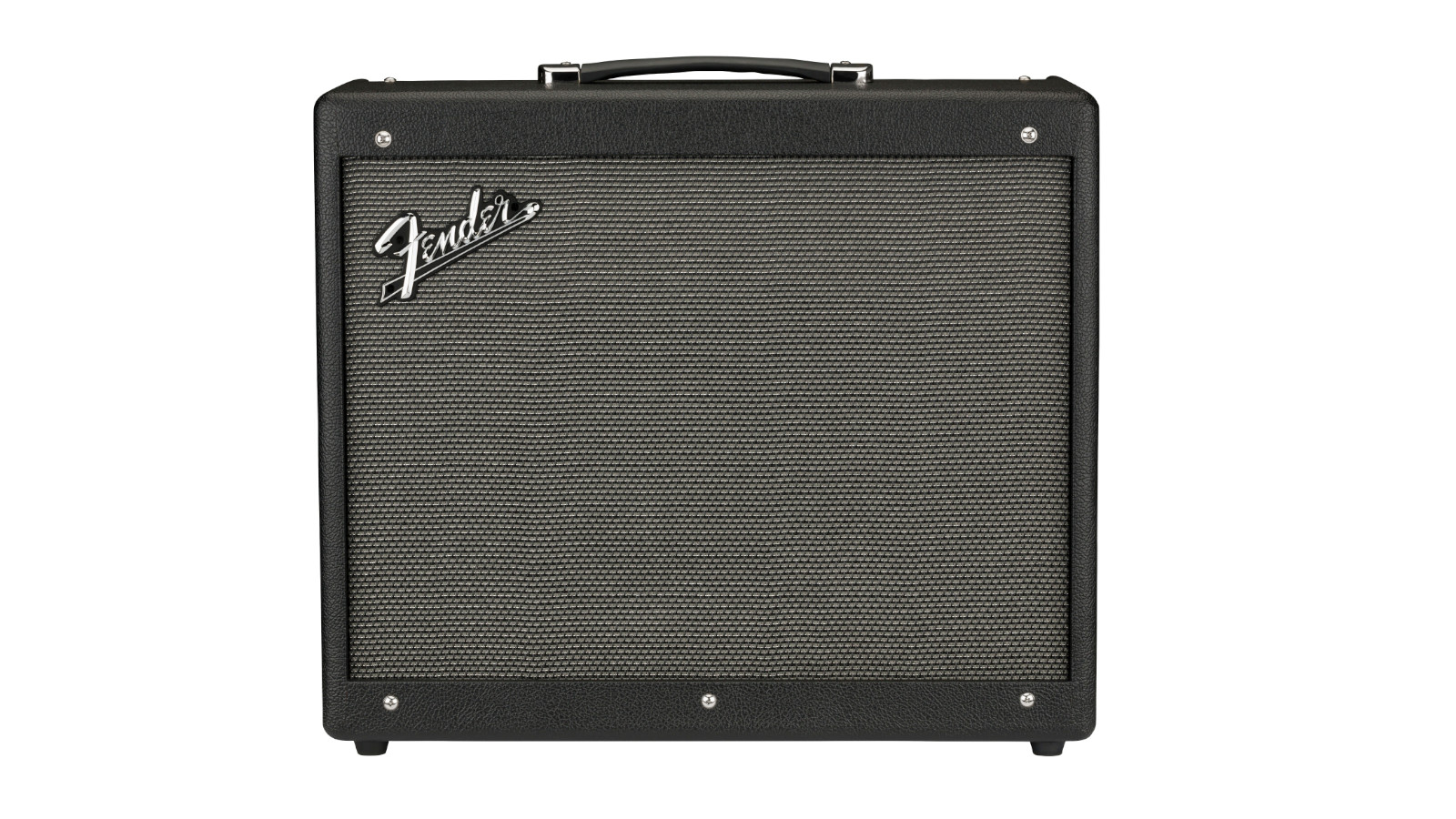
6. Fender Mustang GTX 100
Our expert review:
Specifications
Reasons to buy
Reasons to avoid
✅ Buy if you're an effects wizard: Being fully customizable means you can arrange your effects with ease.
❌ Avoid if you're looking for something a bit less fussy: With a lot going on under the hood, a simpler Fender amp might be more to your liking.
Build quality rating: ★★★★★
Usability rating: ★★★★½
Sounds rating: ★★★★½
Overall: ★★★★½
The GTX100 is Fender’s most advanced model currently in the Mustang lineup. This thing is feature heavy, with 200 modifiable presets, an inbuilt looper and a wide selection of authentic effects. The GTX100 is capable of any tone that springs to mind.
If you’re a player who enjoys tinkering with effects then it's good news, as the GTX100 allows you to organize effects in any order across the signal chain. If you want to get creative and have your fuzz going into a reverb, no problem – it’s fully customizable. Some may be put off by the amplifier’s digital screen but the wi-fi capabilities allow you to connect any device and deep-dive into edits through the Fender TONE 3.0 app, allowing for easier control. The app also has hundreds of community patches you can download and have fun with.
With 100 watts of power, you can easily gig the GTX100, and the included GTX-7 footswitch is a brilliant added extra that makes this amp ready for any musical performance. For those seeking a more modest power level, the GTX50 presents itself as a viable alternative at 50 watts, catering perfectly to bedroom-level playing.
Best vintage

7. Fender Vintage Reissue LTD '59 Bassman
Our expert review:
Specifications
Reasons to buy
Reasons to avoid
✅ Buy if you want a touch of vintage class: I think the punchy Vintage Reissue LTD '59 Bassman will delight any guitarist thanks to it's brilliant performance.
❌ Avoid if you're looking for an amp on the lighter side: This is a big, beefy amp that has heft to it, so look elsewhere for a lighter amp.
Build quality rating: ★★★★½
Usability rating: ★★★★½
Sounds rating: ★★★★★
Overall: ★★★★½
Initially designed for amplifying the P-bass, the Fender Bassman hit the market in 1952 and quickly diverged from the path it was created for. Guitarists such as Jimmie Vaughan, Buddy Guy and Mike Bloomfield discovered the Bassman’s sheer power and raunchy tone when used with an electric guitar, perfect for blues and rock.
Today, the Bassman is a holy grail amp for many and this Fender Vintage Reissue '59 Bassman has been kept quite true to the original “narrow-panel” Bassman of 1959, albeit with a few modern improvements. In line with the ‘59 5F6-A Bassman, the re-issue features four 10-inch Jensen speakers, a lacquered tweed covering, four inputs across two channels and an added midrange control not found on earlier versions.
The ‘improvements’ include 12AX7 preamp tubes and an internal bias pot meaning you can experiment with different tubes if you so desire. As for the sound, well, when cranked, the ‘59 Vintage Reissue Bassman is perhaps the best-sounding amplifier out there. If you’re brave enough to crank it, the Bassman produces a thick, viscous overdrive that only gets better with turning it up. At more moderate levels it’s just as good and you can expect to hear a sparkling, vintage flavor that will excite any guitarist out there.
The Bassman isn't tailored for the faint of heart. However, if you're fortunate to reside in a location removed from sensitive neighbors, you'll discover endless satisfaction in pushing the boundaries of this iconic amplifier to its maximum potential.
Best portable
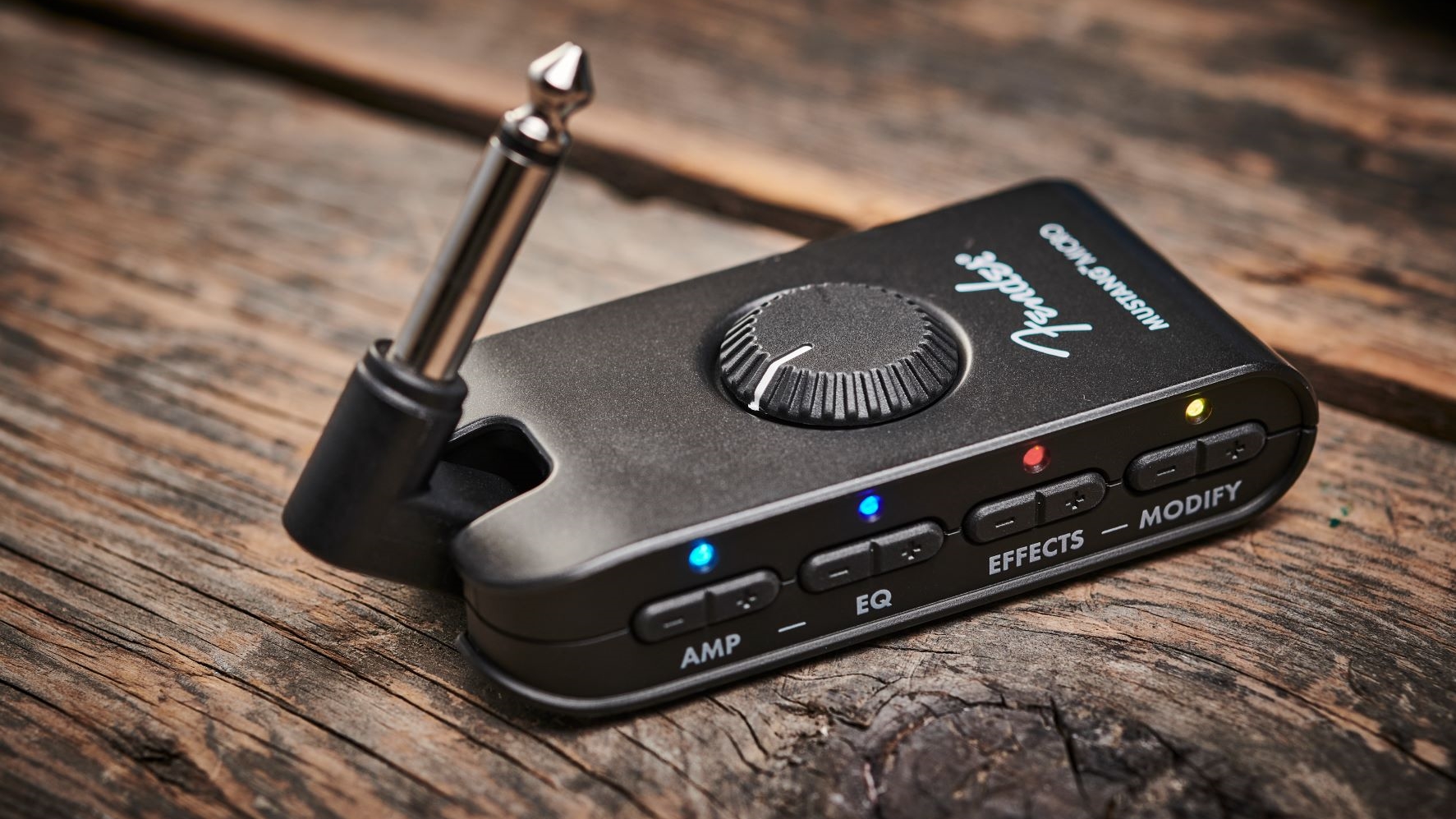
Specifications
Reasons to buy
Reasons to avoid
✅ Buy if you're after a great headphone amp available for an even better price: The Fender Mustang Micro has Bluetooth and is ideal for when you're noodling at home.
❌ Avoid if you need a robust headphone amp: I found the Mustang Micro a little on the flimsy side around the jack.
Build quality rating: ★★★★
Usability rating: ★★★★½
Sounds rating: ★★★★½
Overall: ★★★★½
The Fender Mustang Micro is a fantastic choice if you’re in the market for a portable headphone amp. With 12 amp models spanning super clean Twin Reverb tones to overdriven dirtier sounds, this little gadget is perfect for practicing. Additionally, there are 12 effects you can stick on at the click of a button, although you don’t have much control over editing the effects.
The Mustang Micro is no bigger than a smartphone, so if you’re wanting to play guitar on the move this thing will fit in your pocket with no bother at all. The addition of Bluetooth allows you to stream music through the device meaning practicing along to your favorite songs has never been easier.
With a USB output onboard you can hook the Mustang Micro up to a computer and effectively use it as an audio interface, utilizing the amplifier settings and effects. The rechargeable battery means you won’t have to lose money on continuously buying new ones and the lifespan from one single charge is a suitable four hours. If you are going to take the Mustang Micro on your travels, be careful not to overextend the jack as the plastic holding it in place isn’t the sturdiest.

"Crammed into a tiny package this miracle of modern engineering has an amazing level of feel and tone."
Read more: Fender Mustang Micro review
Best acoustic
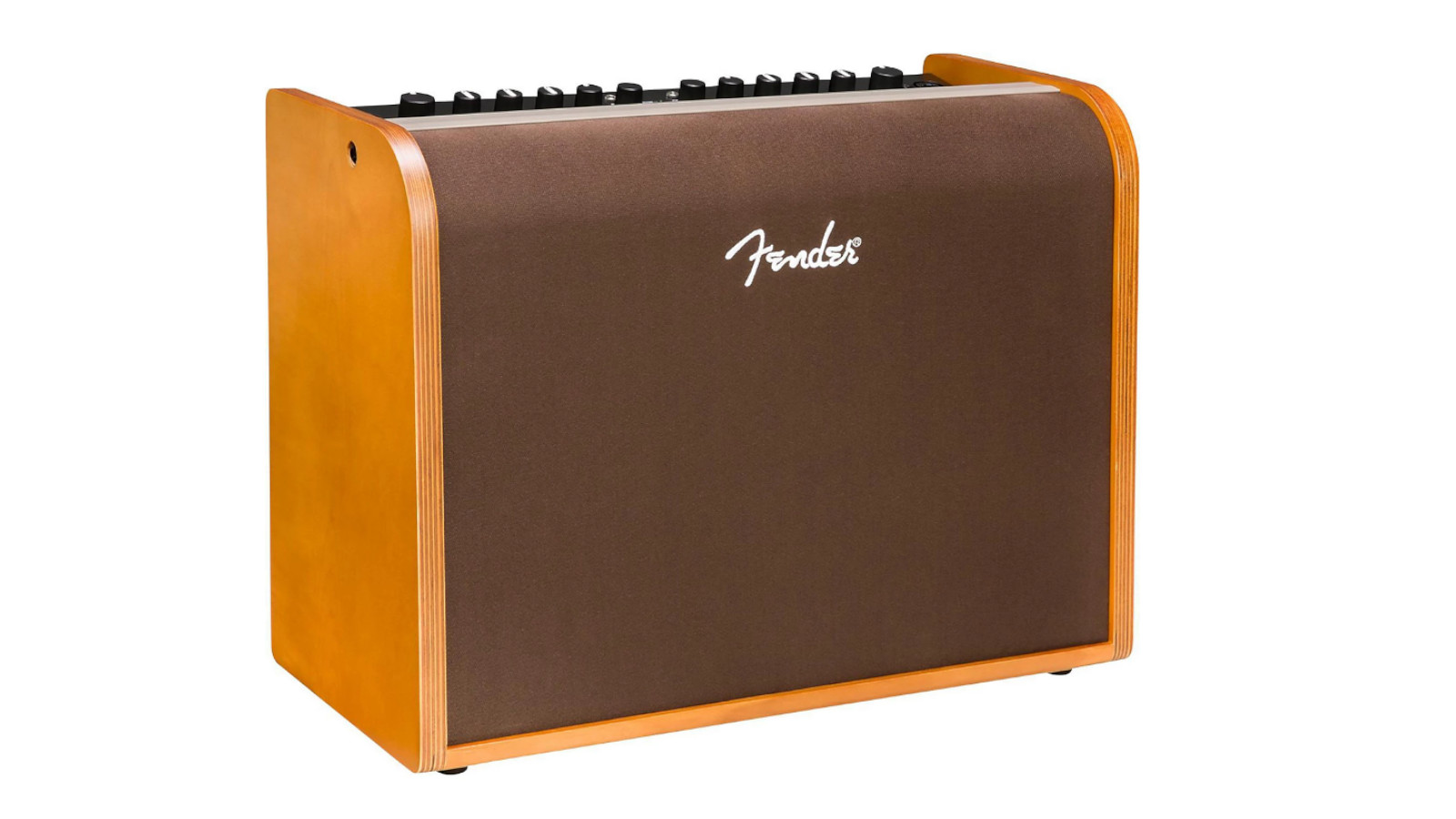
9. Fender Acoustic 100
Our expert review:
Specifications
Reasons to buy
Reasons to avoid
✅ Buy if you're looking to boost the sound of your acoustic: This is a nice option if you're playing more intimate gigs or practicing at home.
❌ Avoid if you need a little more edge from your amp: High frequencies can get a little lost here, and you may need an amp that gives a bit more oomph.
Build quality rating: ★★★★½
Usability rating: ★★★★½
Sounds rating: ★★★★
Overall: ★★★★½
If you’re a singer-songwriter frequenting local coffee shops and bars then the Fender Acoustic 100 is a fantastic, practical little companion. With 100 watts of power and a robust frame, the Acoustic 100 is a transparent amp that lets your acoustic guitar do the talking.
With two combination inputs, this is a versatile amp that will allow you to use either XLR or ¼ jacks, so plugging in a guitar and microphone is no issue. If the 100-watt output isn’t enough then you have an XLR out on the back for plugging straight into a desk or the PA.
The effects are synergistic and range from essential reverb to adventurous delays and the USB jack will let you capture every performance on a computer.
The amp’s transparency is effective in authentically amplifying the best qualities of your instruments, but we have noticed the high-end can sometimes get a little lost. Pair this with an EQ pedal and you’ll eradicate that problem.
The amplifier is also Bluetooth-compatible, so playing along with backing tracks is possible. Its natural plywood design and subtle muted brown cloth not only looks classy but also adds a touch of elegance to your performance space.
Overall, the Fender Acoustic 100 is the go-to choice for acoustic musicians on the move.
Best combo amp
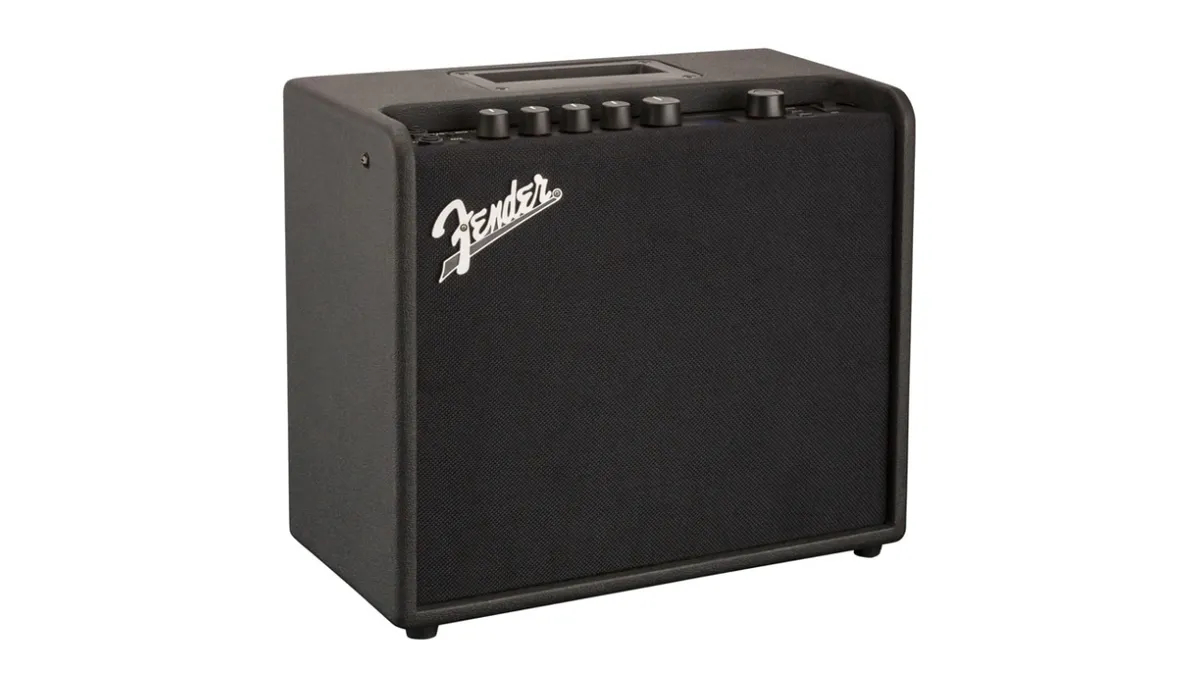
10. Fender Mustang LT25 Combo
Our expert review:
Specifications
Reasons to buy
Reasons to avoid
✅ Buy if you want a versatile amp with loads of presets: The LT25 Combos has a total of 30 pre-programmed presets covering a variety of musical genres.
❌ Avoid if you're in the market for a rehearsal amp: The LT25 might have a load of tricks up its sleeve, but the volume won't cut the mustard in a rehearsal room.
Build quality rating: ★★★★
Usability rating: ★★★★
Sounds rating: ★★★★½
Overall: ★★★★
The Fender Mustang LT25 Combo is the platonic ideal for modern practice amps.
It utilizes powerful digital modeling technology to provide a smorgasbord of amp and effect sounds – 20 and 25 respectively, which are used gainfully in 30 pre-programmed presets that run the gamut from ’80s glam to modern metal.
The control interface is easy to navigate, and it’s easy enough for you to create your own programmed sounds with the 20 spare banks left for you to play with.
Each preset has room for an amp model and four effects – Stompbox (covering distortion, compression and octave), Modulation, Delay and Reverb.
The amp itself is a capable 25-watt solid-state affair, which may be a touch quiet for most live and loud applications. However, at home this amp excels, with comfortable bedroom-level volumes and a great clarity in spite of them. Its plurality of sounds and built-in USB interface make it perfect for home recording, too.
Best tube amp

11. Fender ’68 Custom Vibro Champ Reverb
Our expert review:
Specifications
Reasons to buy
Reasons to avoid
✅ Buy if you want audio variety from your amp: Played low, and the Champ delivers crystal clear sound, but crank it and you'll get a cacophonous roar.
❌ Avoid if the Vibro Champ sounds like a bit too much variety: If you just want a straighforward Fender amp without a wild mix, then something else from the list might serve you better
Build quality rating: ★★★★
Usability rating: ★★★★
Sounds rating: ★★★★
Overall: ★★★★
The Fender ’68 Custom Vibro Champ Reverb is a low wattage tube amp that has, over the years, delivered some of the most iconic rock tones to be recorded.
At 5W it’s loud enough to play small gigs, but when you crank the volume, you get that beautiful, organic breakup without the deafening power of something like a Twin Reverb.
Using the ’68 Vibro Champ as a base with a few modern updates, this Fender amp represents a great blend of vintage and modern.
It’s got a slightly bigger 10” speaker, allowing the bass frequencies to come across better, plus you’ve now got a nice hall reverb go alongside the tremolo.
At lower volumes, the Vibro Champ has the beautiful, glassy clean tone that Fenders are famed for, but the more you dial it up, the more it growls, making for a versatile and classic option.
Best for tones
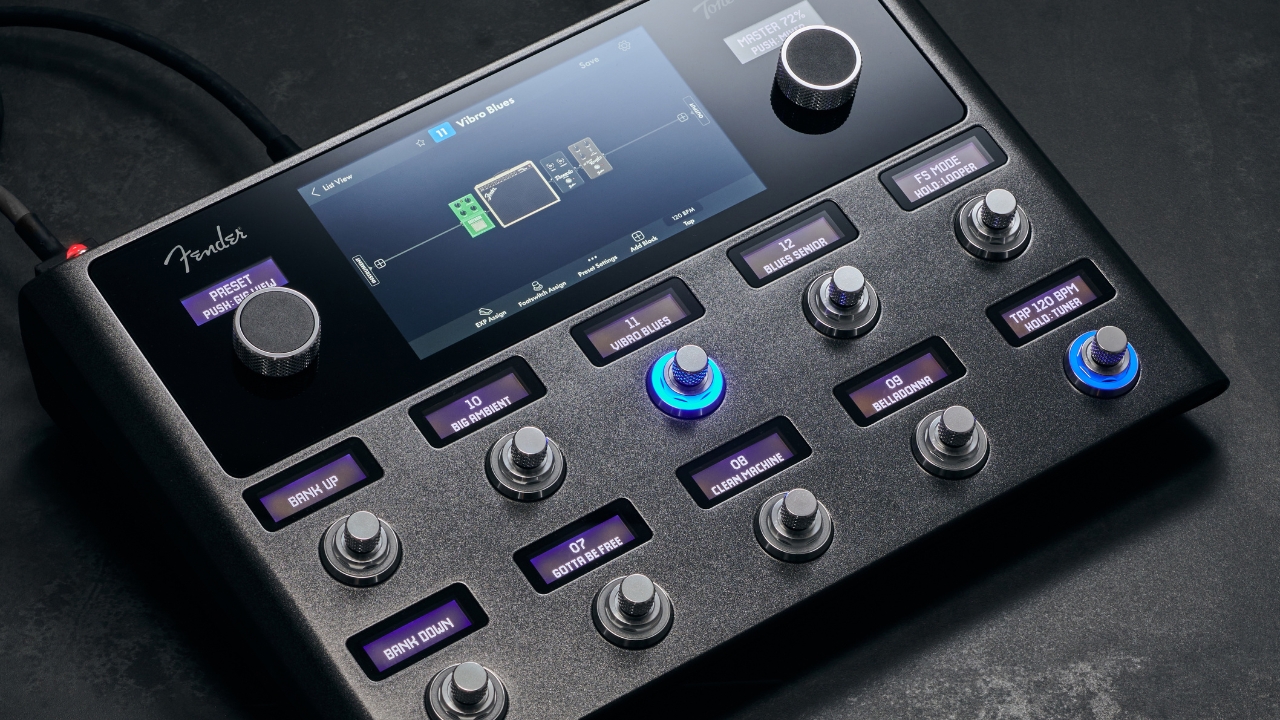
12. Fender Tone Master Pro
Our expert review:
Specifications
Reasons to buy
Reasons to avoid
✅ Buy if you want the ultimate in variety: You can get your hands on a huge number of amazing amp sounds with the Tone Master Pro.
❌ Avoid if you're on a budget: Having so many tones at your disposal comes at a cost.
Build quality rating: ★★★★
Usability rating: ★★★★
Sounds rating: ★★★★★
Overall: ★★★★
Ok, so maybe it’s not an amp in the most traditional sense, but the Fender Tone Master Pro delivers a supremely wide range of incredible amp sounds. Just bear in mind that you’ll need a powered speaker or headphones to get any noise out of it.
Taking after the popular Tone Master amp series, this floor modeler has everything you need to create almost any tone imaginable. It contains loads of different amp models - from classic Fenders to high-gain behemoths, plus there are tons of built-in effects.
You can then create all manner of presets to make this your only go-to piece of gear alongside your guitar for live shows and even the studio.
It is expensive, and not everyone likes modeling or indeed menu scrolling, but if you’re happy to get stuck into the modern digital side of things, then this is one of the best Fender amps that money can buy.

"The Tone Master Pro offers an impressive amount of versatility — in sounds, functionality and connectivity — all at a level of quality that suits the professional stage as well as the rehearsal room and is a worthy winner of a Editors' Pick award."
Read more: Fender Tone Master Pro review
FAQ
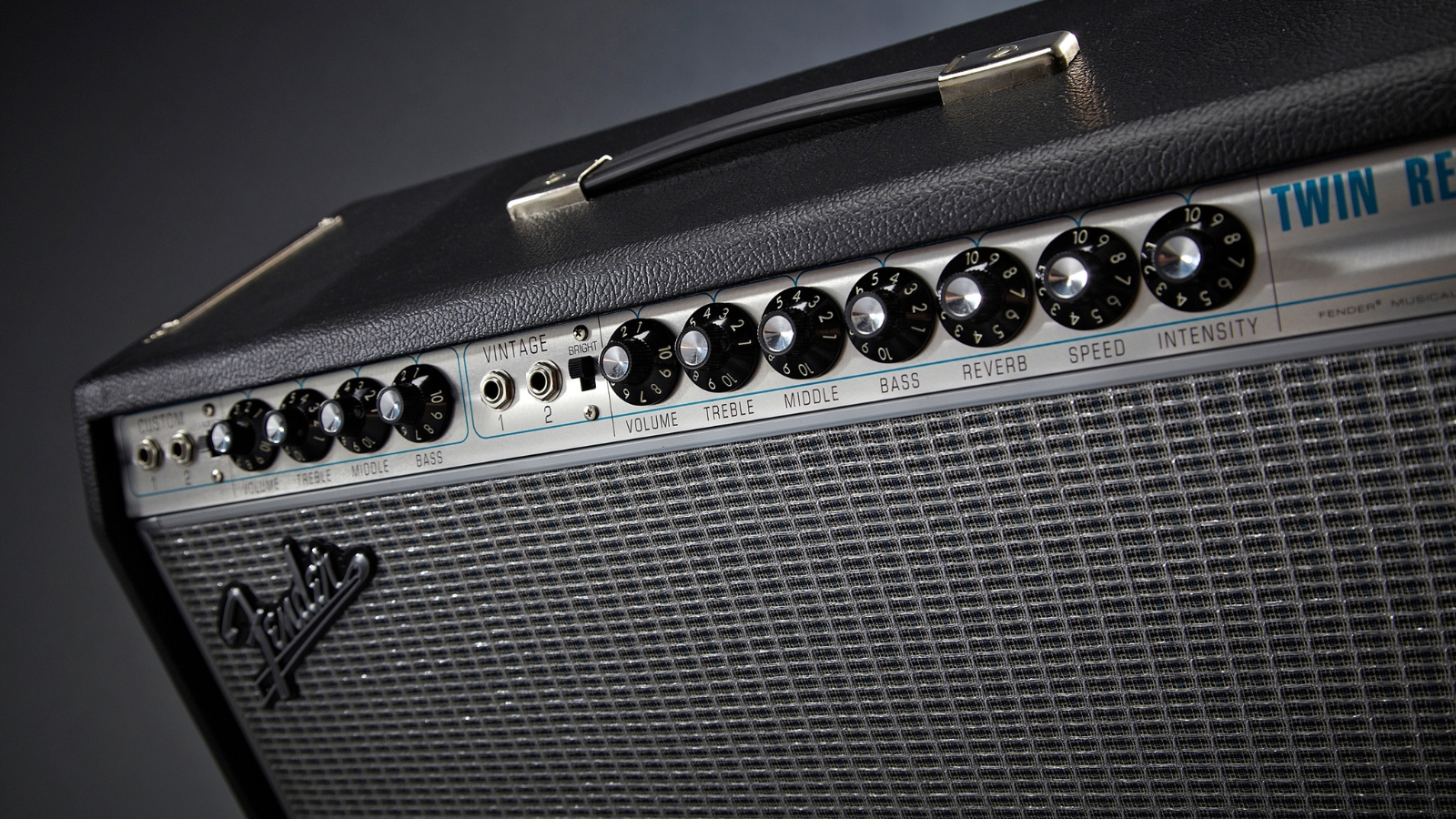
What genres are Fender amps good for?
Fender amplifiers have been used across a wide range of genres throughout their illustrious history. Firstly, their clean tones are primarily what the Californian giants are known for. Generally, Fender amps have plenty of headroom and lots of output, making them an ideal option for crystal-clean electric guitar tones. This suits country and bluegrass music to a tee. Fender’s smaller models, like the Blues Junior, which have a little less headroom and can be cranked without blowing the roof off, are perfect for hard rock and electric blues, as the name suggests.
Even their slightly larger models like the 22-watt '65 Deluxe Reverb will be perfectly at home playing funk, pop and R&B. Fender amps are also fantastic pedal platforms and will get you to your desired tone with a combination of the correct pedals. If there is one thing Fender amplifiers aren’t renowned for is their ability to perform well with heavier music like metal. Primarily due to their usually large headroom, achieving highly saturated gain isn’t in their wheelhouse.
Should I choose a solid-state or tube Fender amp?
Fender make a great range of amps that utilises all the technology available today. Many players’ favorite amps hark back to the 50s and 60s, so tube amps are just as much of a thing today as they were back then.
Tube amps sound rich and are extremely dynamic, responding to every nuance in your playing. The sound will change as you increase the volume, gradually adding in more compression and breakup. They’re often the choice for many pro-level players, but they do tend to be expensive and heavy.
Solid state amps don’t feature any tubes and so are lighter; if weight is an issue, then you might well want to consider a solid state. They also sound pretty much the same regardless of where the volume is set, so you don’t get the same sort of compression and breakup that you would with a tube amp.
Modeling amps emulate the sound and response of other amps. They use digital technology to try and recreate the same sort of character that you’d experience with a range of different tube amps. Usually, you’ve got a few different amp styles to choose from, allowing you to get all sorts of different tones from them. There is however one range of modeling amps that only gives you the sound of one amp…
What is the Fender Tone Master series?
Fender’s Tone Master amps are all based on just one legendary model from their history. So, for example, the Tone Master Deluxe Reverb is modeled off of a ’65 Deluxe Reverb. It will react and sound the same as the real thing, with the same sort of compression and overdrive being introduced as you turn it up.
So, why would you get one over the real thing? Well, for a start you can reduce the output power of the amp allowing you to achieve those glorious overdriven sounds at more bedroom-friendly levels - something that isn’t possible with most of the tube amps. You’ve also got modern features such as balanced output XLR with cabinet simulation, plus they’re considerably lighter.
The technology is truly impressive and even some of the most die-hard old Fender tube amp fans have been converted.
Are Fender amps only good for clean tones?
Fender have earned a reputation for being great sounding clean amps - and rightly so! Many of their amps have a lot of clean headroom as well as a rich and distinct voice. Generally speaking, they’re beautiful and glassy sounding, with sparkly treble frequencies and a present low end.
As a result, many players have looked to Fender for their clean tone, however that’s not all they can do. As you turn up the volume on Fender’s classic tube amps, the sound will start to compress and gradually break up. Whereabouts this occurs depends on the particular amp, and your guitar.
The more you increase the volume, the more overdrive you’ll hear - some of the best rock tones recorded have been Fender amps turned all the way up. You won’t really hit heavy metal territory, but you’re in very comfortable rock territory. If you do lean towards the heavier tide of things, you can always check out their modeling amps though.
So, you can choose the best Fender amp for you by determining what you want it for. If you want clean headroom, then go for something with more power. This can also work really well if you want an amp as a pedal platform to let your stomp boxes do all the work. If you want that natural breakup, then a lower wattage amp will allow you to do that without the ear-splitting volumes.
How we test
At Guitar Player, our team of writers aren't just music enthusiasts; we're real-life musicians. Our hands-on experience with Fender amps runs deep, ensuring that our reviews and recommendations are backed by practical knowledge and real-world testing.
When it comes to selecting the best Fender amps, we leave no note unplayed. We meticulously evaluate factors like tonal versatility, sonic character, build quality, and value for money. Only after rigorous testing in a variety of playing scenarios do we choose the cream of the Fender amp crop for our guides. We stand by our selections, ensuring that every amp we recommend is one we'd use ourselves.
Whether you're a budding guitarist or a seasoned pro, we've got you covered with a diverse range of Fender amps. From wallet-friendly options to boutique treasures, our selections cater to every budget and playing style. Rest assured, whether you're performing on stage or crafting music in your studio, any of these Fender amps will deliver the legendary tone and reliability you expect from this iconic brand.
Meet the experts

Ross has been a music lover and guitar player since the age of 8. He has spent the five years since graduating from university working in music retail, selling guitars, amps and more. Ross is particularly interested in electric guitars, pedals and amplifiers and his current rig includes a trusty 2009 American Standard Stratocaster and Vox AC30S1 with a few Walrus Audio and Way Huge pedals in between.

After spending a decade in music retail, Richard is now a freelance writer for MusicRadar, Guitar Player, Guitar World and Reverb, specialising in electric and acoustic guitars, bass, and almost anything else you can make a tune with. When his head’s not buried in the best of modern and vintage gear, Richard runs a small company helping musicians with songwriting, production and performance, and plays bass in an alt-rock band. Otherwise, you'll probably find him out walking the dog!

James Grimshaw is a freelance writer and music obsessive with over a decade in music and audio writing. They’ve lent their audio-tech opinions (amongst others) to the likes of Guitar World, MusicRadar and the London Evening Standard – before which, they covered everything music and Leeds through their section-editorship of national e-magazine The State Of The Arts. When they aren’t blasting esoteric noise-rock around the house, they’re playing out with esoteric noise-rock bands in DIY venues across the country; James will evangelise to you about Tera Melos until the sun comes up.

Matt has been recording bands since the mid-noughties, cutting his teeth with an M-Audio M-Track 2 and a copy of Cubase on Windows XP. Since then he's used countless audio interfaces to record music for bands across the UK, covering everything from djent to jazz. As a MusicRadar writer, Matt has reviewed 15 audio interfaces in the past year alone, and over 50 different products including guitars, amps, and pedals. Before becoming a writer, he spent five years in the music retail industry working for Dawsons Music and Northwest Guitars, providing expert advice to musicians. He’s currently studying Music Production at Spirit Studios in Manchester, UK.
Latest updates
09/04/25: The guide has been updated to include two new products: Fender ’68 Custom Vibro Champ Reverb and Fender Tone Master Pro. All 12 products featured now have added "At a glance" sections alongside star-ratings for quick reference. Review verdicts have been included where applicable and the FAQ section has been expanded with more information. Also added a "Meet the experts" section.
Read more
You can trust Guitar Player.
- Our pick of the best guitar amps overall
- Best guitar amps under $500: Tones that won’t break the bank
- Best tube amps: Fender, Marshall & more
- Best pedal amps: Power up your pedalboard
All the latest guitar news, interviews, lessons, reviews, deals and more, direct to your inbox!
Ross has been a music lover and guitar player since the age of 8. He has spent the five years since graduating from university working in music retail, selling guitars, amps and more. Ross is particularly interested in electric guitars, pedals and amplifiers and his current rig includes a trusty 2009 American Standard Stratocaster and Vox AC30S1 with a few Walrus Audio and Way Huge pedals in between. He currently writes for Guitar Player and Guitar World.
- Matt McCrackenJunior Deals Writer
- Richard Blenkinsop
- James Grimshaw

